
French Garden Landscape Design: Where History, Culture, & Nature Flourish
Published: 18/03/2024 | Updated: 18/03/2024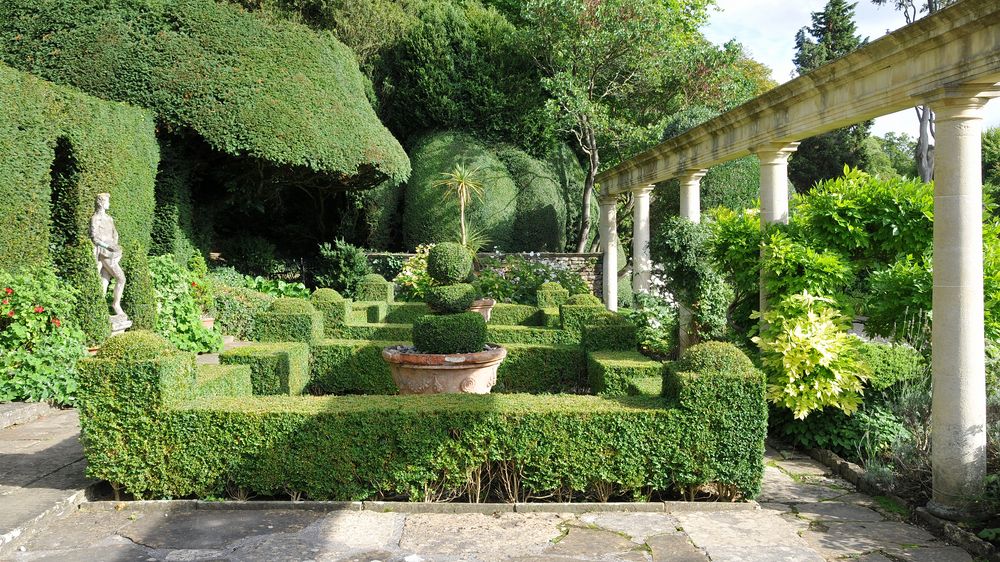


The allure of a French garden landscape design is a harmonious blend where history, culture, and nature effortlessly come together to create magnificent outdoor spaces. With its roots dating back to the lavish gardens of the Palace of Versailles, French garden design has evolved over centuries, showcasing exquisite beauty and a deep appreciation for nature.
In this article, we delve into the enchanting world of French garden landscape design, exploring its historical significance, cultural influences, and the timeless elegance it brings to any outdoor setting.
Whether you seek inspiration or simply wish to immerse yourself in the tranquility of these remarkable landscapes, join us on this journey where history, culture, and nature flourish in perfect harmony.
What is a French Garden Landscape Design
The concept of a French garden is deeply rooted in the principles of geometry, order, and balance. Every element of style gardens is carefully arranged to create a harmonious composition, reflecting the influence of classical architecture and the desire for aesthetic perfection. The use of geometrically shaped flower beds, parterres, and alleys lined with meticulously trimmed trees and shrubs all contribute to the visual appeal of the design of style gardens.
In addition to its emphasis on symmetry and geometric patterns, a French formal garden landscape also incorporates elements and plants that pay homage to the natural world. Water features such as ponds, fountains, and reflecting pools are an integral part of the design of formal gardens, adding a sense of tranquility and enhancing the connection with nature.
The inclusion of carefully selected and curated plant species, including boxwood hedges, roses, and formal topiaries, further enhances the beauty of the French garden, creating a seamless blending of nature and human artistry.
A French garden landscape design goes beyond its visual appeal; it is a testament to the historical and cultural significance of French flair gardening traditions and styles. These gardens are a reflection of the French appreciation for art, beauty, and the pursuit of perfection. They serve as a living testament to the grandeur of the past and continue to inspire generations of garden enthusiasts around the world.
How to Incorporate French Garden Landscaping in Your Modern-Day Landscape
While the grandeur of French garden landscape design may seem like a relic of the past, it is still possible to infuse elements of this timeless style into a modern-day landscape. By embracing the principles of symmetry, order, and balance, you can create a captivating fusion of history, culture, and nature in your own outdoor space.
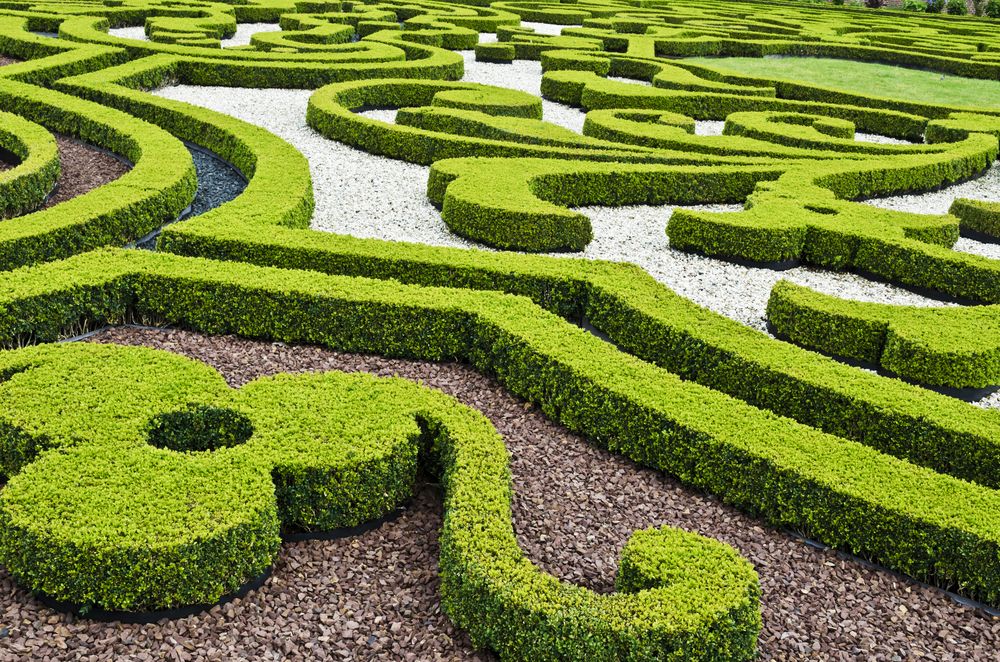
1. Define a Formal Layout
If you're looking to incorporate the timeless French style of garden landscaping into your modern-day landscape, establishing a well-defined and structured layout is essential. French gardens are revered for their meticulously crafted geometric shapes, which emanate elegance and precision. To achieve this aesthetic, consider incorporating straight paths that intersect at right angles, creating a symmetrical and balanced design that is pleasing to the eye.
Symmetry is a key element in the French style of garden design, and one way to achieve this is by introducing symmetrical planting beds. These beds should be carefully mirrored on either side of a central axis, creating a sense of harmony and visual balance.
By aligning plantings and features symmetrically, you obtain a cohesive and cohesive look that reflects the fascination with order and symmetry that is characteristic of the French style.
To further enhance the orderliness and balance of your garden, it is crucial to establish precise boundaries. Neatly trimmed hedges or low walls can serve as defining elements in formal gardens, creating well-defined edges and delineating separate garden spaces. These boundaries not only add structure but also add interest and contribute to the overall aesthetic appeal of your French-inspired landscape.

2. Design with Symmetry in Mind
In French garden design, symmetry plays a central role in achieving a balanced and harmonious visual appeal. By incorporating symmetrical patterns, you can enhance the overall composition of your garden. One way to achieve this is by strategically placing matching elements, such as plantings, or seating areas, on both sides of a central axis.
This deliberate arrangement creates a sense of balance and order that is characteristic of French gardens. The symmetrical layout encourages the eye to move smoothly and effortlessly throughout the space, creating a visually captivating experience for visitors.
Additionally, this design approach emphasizes the attention to detail and meticulous planning that is often associated with the French garden tradition. By incorporating symmetrical patterns into your garden design, you can elevate its aesthetic appeal while paying homage to the timeless elegance, style, and beauty of French garden tradition.
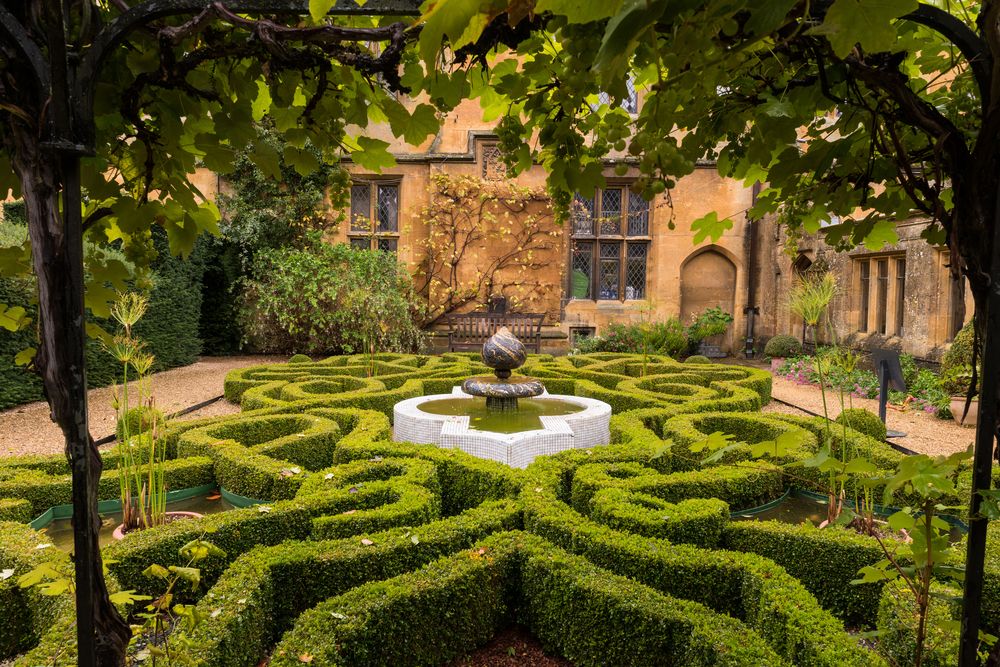
3. Add Focal Points
Enhancing the visual intrigue and allure of your landscape can be achieved by incorporating focal points that draw the eye and create captivating interest. An effective approach to achieve this is by opting for classical-inspired elements, such as obelisks, or water features. Adding these elements to your garden design can infuse a sense of timelessness and sophistication, reminiscent of the elegance and grandeur often associated with French gardens.
Consider placing a centrally positioned fountain or selecting a well-placed sculpture as a statement piece within your landscape. This strategic placement will not only emphasize the focal point but also exude an air of elegance and prominence.
A grand, classical fountain can serve as a stunning centerpiece, exuberantly displaying the beauty of flowing water. While an elegantly crafted sculpture can effortlessly capture attention, accentuating the overall design aesthetic and creating a sense of artistic cohesion.
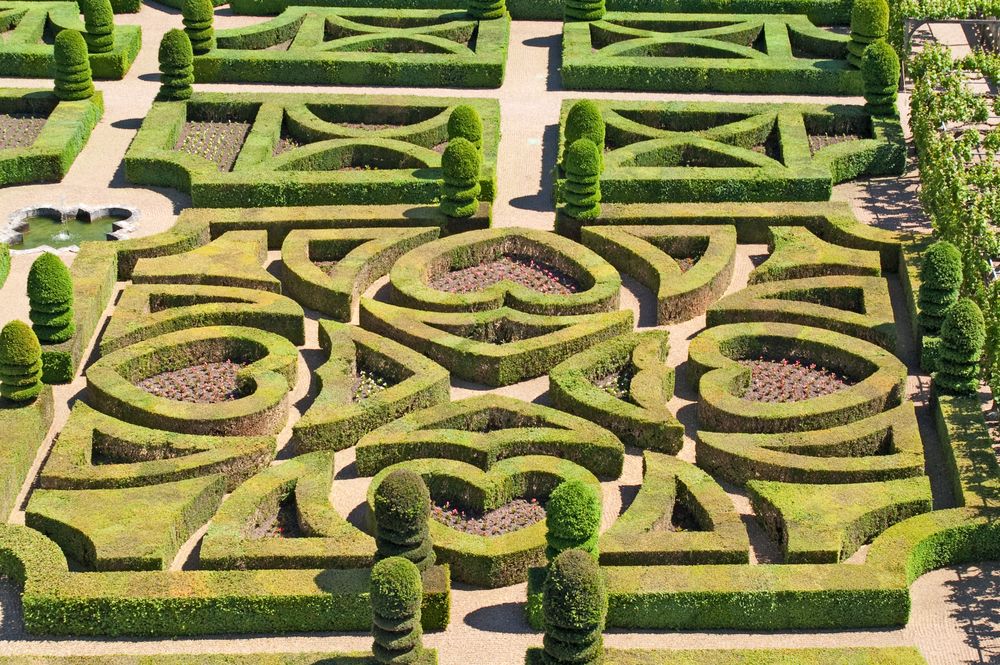
4. Consider Boxwood Hedges
When it comes to French garden landscaping, one iconic element that instantly comes to mind is the boxwood hedge. These meticulously trimmed hedges and trees not only bring a sense of structure but also exude an air of formality, adding a touch of classic elegance to your modern-day garden.
Boxwood hedges can serve multiple purposes in your garden design. One way to utilize them is by using them to define paths, creating a clear and distinct route for strolling or exploring your garden. This not only adds functionality but also visually enhances the overall layout.
Additionally, you can use boxwood hedges to create borders, mark boundaries, and delineate different areas within your garden. This can help create a sense of organization and give your garden a neat appearance.
For a truly Parisian touch, consider shaping boxwood hedges into parterres. These intricate and geometric planters and patterns can be created by meticulously trimming and shaping the hedges into intricate designs, such as knots, diamonds, or symmetrical patterns. Parterre designs have been used for centuries in French gardens to add a sense of grandeur and architectural elegance.
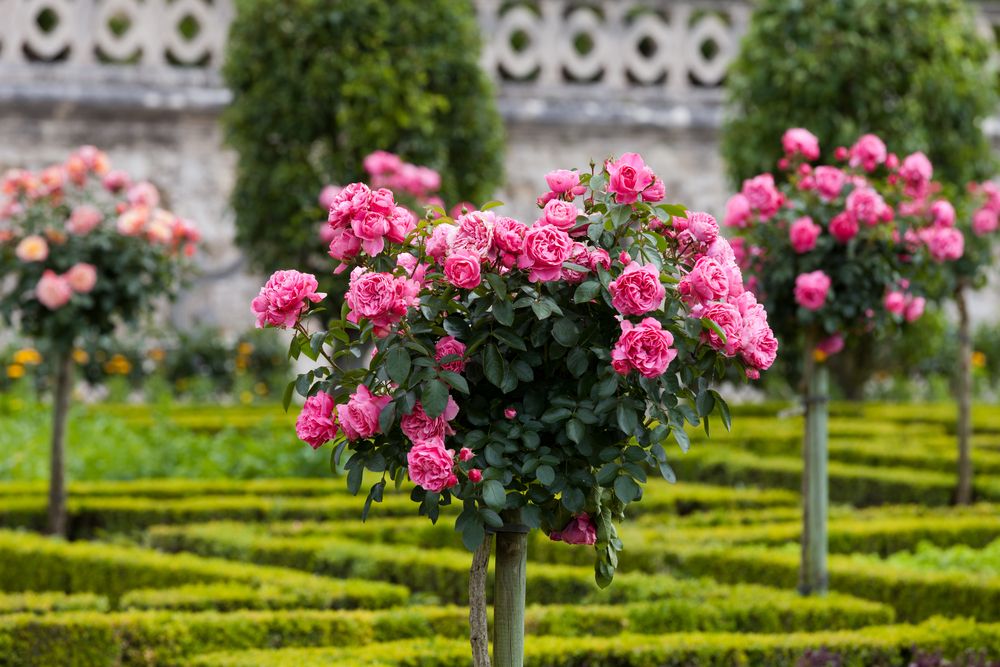
5. Select a Refined Plant Palette
Carefully choosing plants and selecting plant species that embody their essence is crucial. Opting for classic roses, lavender, and blue clematis is a popular and enduring choice.
Classic roses, with their elegant blooms and intoxicating fragrance, are a staple in French gardens. Their diverse range of colors and varieties allows you to choose ones that complement your overall design and create a captivating visual display.
Lavender, well known for its soothing aroma and vibrant purple hues, brings a sense of tranquility and natural charm to your garden. Likewise, clematis, with its graceful climbing vines and a variety of flower colors, adds vertical interest and a touch of whimsy.
Incorporating color into your garden is essential, and carefully curating flower beds enables you to achieve the desired impact. Consider creating a balanced spring color palette by mixing contrasting or complementary hues, ensuring a harmonious blend of shades throughout the seasons.
By selecting plant species that bloom at different times, you can ensure that the layered look of spring in your garden remains vibrant and captivating throughout the year.
The texture is equally important in French landscape design. Combining plants with different leaf shapes, sizes, and textures adds depth and visual interest to your garden. Integrate a variety of foliage types, such as feathery ferns, delicate grasses, or broad-leafed plants, to enhance the overall aesthetic and create a diverse tapestry of natural textures.
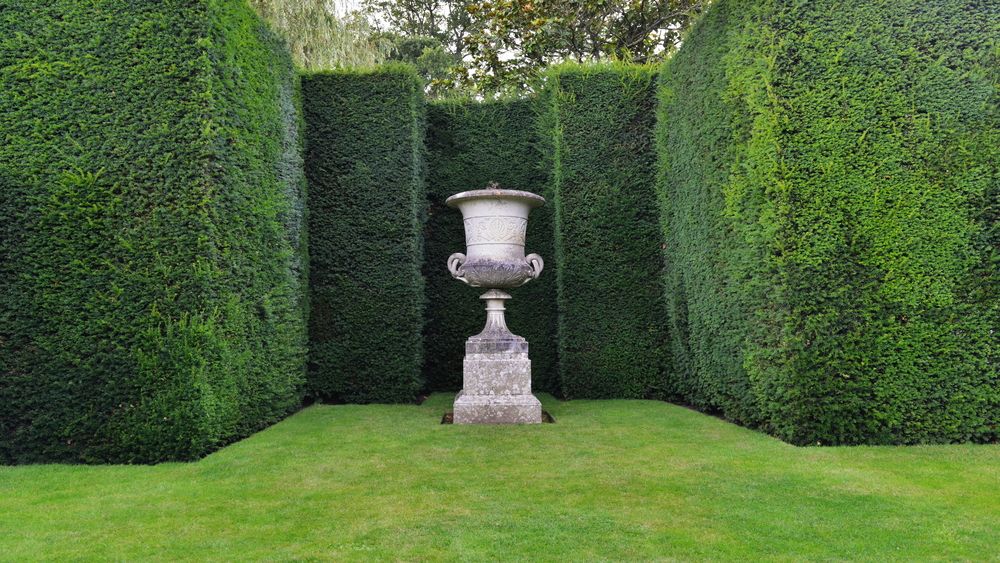
6. Incorporate Gravel or Stone
To infuse your landscape with an authentic French-inspired charm, incorporating gravel or stone pathways can be a transformative choice. Whether you opt for crushed, gravel paths or elegant paving stones, these pathways not only add functionality but also enhance the landscape designer's overall aesthetic appeal, creating a sense of elegance and formality.
Gravel pathways are a classic feature commonly found in French gardens. The crunch of gravel underfoot as you stroll through your garden can evoke a sense of nostalgia and tranquility, transporting you to the picturesque landscapes of the French countryside.
Crushed gravel pathways offer a rustic and natural element, blending seamlessly with the surrounding greenery and soil. They provide a soft and porous surface that allows for natural drainage and prevents water from accumulating, offering functionality and practicality.
On the other hand, paving stones can elevate the sophistication and refinement of your garden design. With a variety of materials to choose from, such as limestone, flagstone, or cobblestone, you can create pathways that exude a timeless elegance reminiscent of French châteaux.
The carefully laid stones, whether in a herringbone or grid pattern, bring a sense of structure and precision to your lawn and garden, enhancing the overall visual appeal of green space.
Gravel or stone pathways between planting can serve as a picturesque journey through your garden, guiding visitors along designated routes and inviting exploration. These pathways not only add a touch of authenticity to the natural landscape but also enhance the garden bed's overall ambiance, creating a harmonious connection between the natural elements of your landscape and the architectural design of your French-inspired garden.
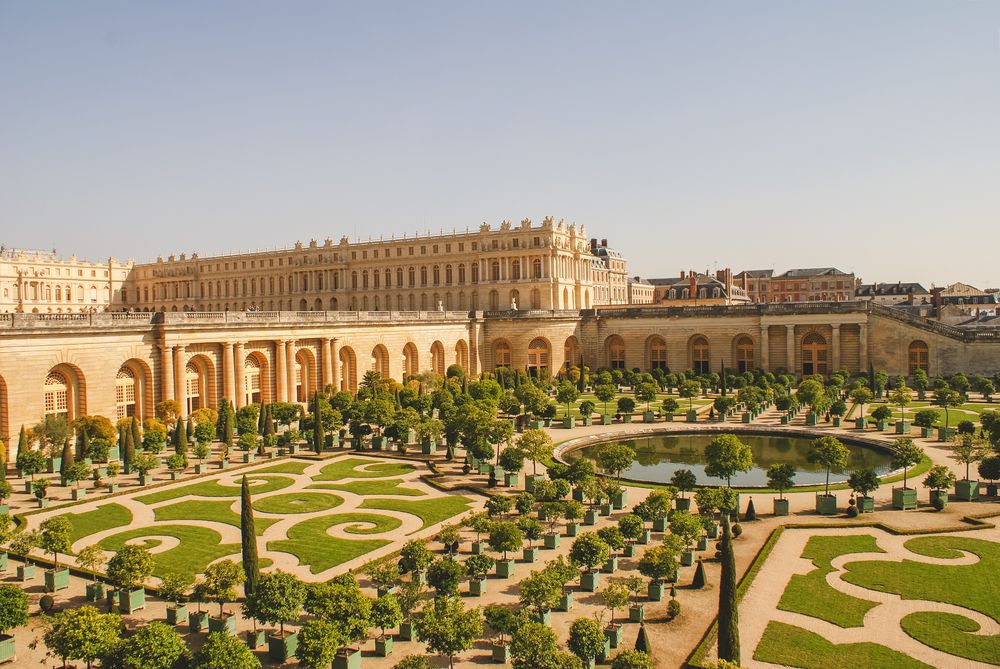
7. Integrate Water Features
Incorporating water features into your garden design is an essential aspect of capturing the essence of French garden aesthetics. These timeless elements not only add visual appeal but also evoke a sense of tranquility and serenity, creating the grounds for a captivating and serene ambiance in outdoor rooms.
One option to consider is adding a small pond to your landscape. This serene water feature can become a focal point, attracting attention and creating a soothing atmosphere. A carefully designed pond can house aquatic plants, provide a habitat for wildlife, and reflect the surrounding elements, amplifying the beauty of your garden.
The gentle sound of water trickling and the sight of fish swimming can transport you to a serene oasis, evoking the peacefulness of a French garden.
Another classic design choice is a tiered fountain, with its elegant sculptural form and cascading water. A tiered fountain creates a dynamic visual element and can serve as a focal point, capturing attention and imparting a sense of timeless beauty. The sound of water gently flowing down the tiers enhances the soothing ambiance and can mask unwanted noise from the surrounding environment outdoors, allowing you to fully immerse yourself in the tranquility of your garden.
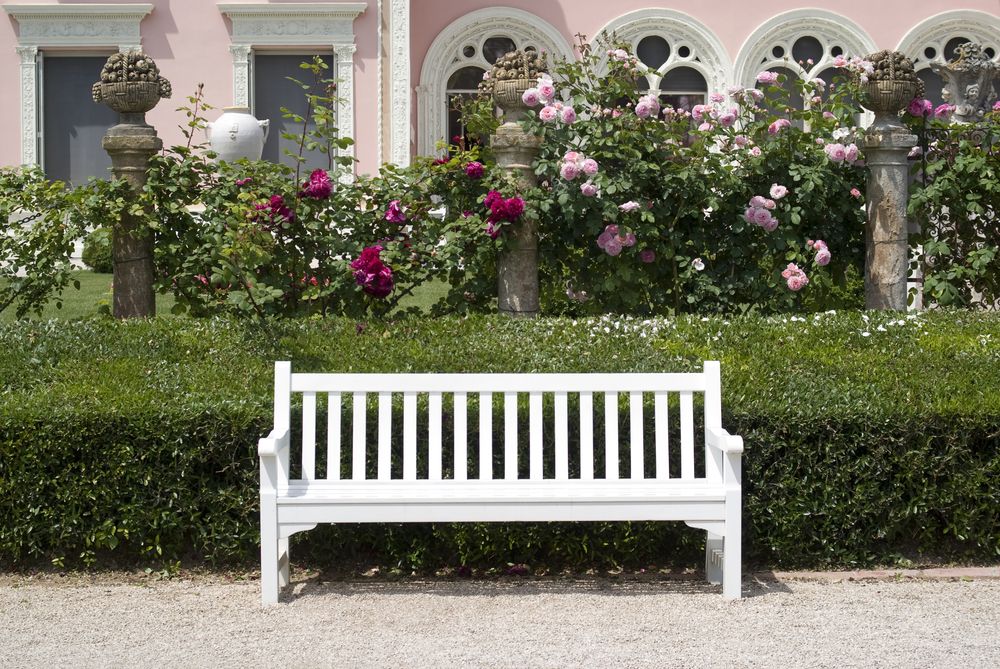
8. Create Intimate Seating Areas
Creating intimate seating areas within your garden is a key element of embracing the true essence of a French garden. These dedicated spaces not only allow you to appreciate the beauty of your surroundings but also provide a charming and inviting atmosphere for relaxation and contemplation. Consider incorporating wrought-iron benches or a quaint bistro set into a picturesque corner of your garden to achieve a truly authentic ambiance.
Wrought-iron benches are a timeless choice that effortlessly blends with the elegance and romance of French garden design. With their intricate designs and sturdy construction, these benches add a touch of old-world charm, creating an enchanting spot to sit and savor the beauty of your garden.
Place them under a vine-covered pergola, against a backdrop of blooming flowers, or beneath the shade of a graceful tree, allowing you to fully immerse yourself in the tranquility and serenity of your outdoor sanctuary.
Alternatively, a quaint bistro set provides a cozy and intimate seating arrangement that evokes the ambiance of a Parisian sidewalk café. These sets often feature a small table and two chairs, perfectly suited for enjoying a morning cup of coffee or an afternoon tea amid your terrace, patio, or garden oasis.
Choose a set made from classic materials such as wrought iron or wrought aluminum, complementing the overall aesthetic of your French-inspired design.
Nestling these seating arrangements within picturesque corners of your garden enhances the charm and allure of your outdoor space. Consider placing them near fragrant flower beds, along a meandering pathway, under fruit trees, or overlooking a tranquil water feature. By carefully positioning these seating areas, you can create hidden retreats that invite you to relax, unwind, and savor the sensory delights of your French garden.
Design Your Dream Yard Online
If you're inspired by the allure of French garden landscape design and want to transform your own outdoor space into a breathtaking haven, look no further than the site Shrubhub.com. Shrubhub is an online platform that offers a top-rated 3D landscape design service, allowing homeowners to bring their dream yards to life.
With Shrubhub, designing your ideal French garden has never been easier. By utilizing their innovative design service, you the landscape designer can create a stunning 3D landscape design that perfectly captures the essence of history, culture, and nature that flourishes in French gardens.
The process is simple and cost-effective, making it accessible to all. To get started, you select a package that suits your needs – whether it's a front yard, back yard, or both. Each package comes with a range of features, including a 3D landscape and hardscape design based on your own planters' preferred style, phone consultation with a pro landscape design consultant, shopping lists for design elements, expert consultations on plant selections, and even contractor installation quotes.
To ensure that their designs are tailored to your individual preferences, Shrubhub's experienced design consultants work closely with you to understand your style and vision. Whether you desire a traditional, Mediterranean, or modern French garden, Shrubhub can bring your ideas to life.
Embrace the Timeless Beauty of French Design
French garden landscape design is a culmination of history, culture, and nature, coming together to create an enchanting outdoor space. With its emphasis on geometric shapes, symmetrical layouts large trees and shrubs, and serene water features, this style of gardening allows you to transport yourself to a different era and immerse yourself in the allure of French elegance.
By incorporating elements such as ornate fountains, tranquil ponds, and intimate seating areas, you can create a sanctuary that reflects the rich heritage and refined taste of French garden aesthetics. The garden beds carefully structured layout and precise boundaries instill a sense of order and balance in intimate spaces, while the meticulously curated plantings evoke a vibrant tapestry of colors, textures, and scents.
So, whether you find yourself strolling through the perfectly aligned paths of flowers, relaxing in a quiet nook among olive trees, or admiring the reflection in a tranquil pond, embrace the beauty of French garden landscape design and let it flourish in your oasis. The merging of history, culture, and nature will create a landscape that not only satisfies the senses but also nurtures the soul, providing a source of joy and tranquility for years to come.


